Designing a Calm Minimalist Yoga Room
Set Your Intention Before You Set the Room
Write three words you want your room to embody—perhaps steady, spacious, serene. Let those words guide every decision, from color and lighting to storage and decor. Share your three words with us below to inspire someone else beginning the same journey.

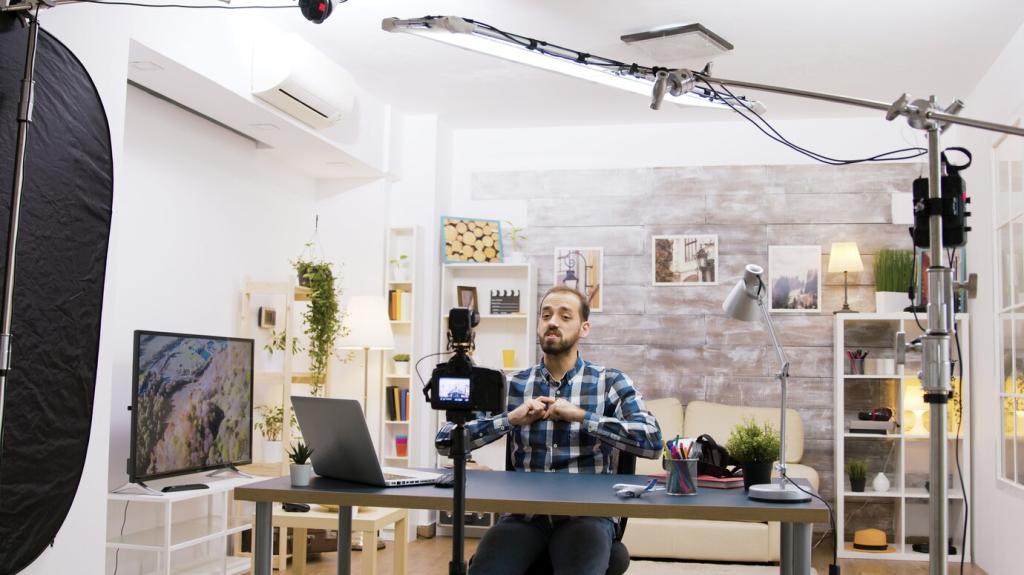
Set Your Intention Before You Set the Room
Lay out everything you think you need, then remove half. Keep only what supports breath, mobility, and quiet focus. A reader once told us their room transformed the moment they let go of duplicate props and mismatched decor. What will you release today?
Layout, Flow, and Nourishing Negative Space
The geometry of breath
Center the mat so both sides have equal clearance for wide postures and restorative setups. A simple rule: aim for clear space around the mat’s perimeter to prevent bumping into furniture during balance poses. Notice how symmetry subtly steadiest your nervous system.
Sightlines that soothe
Position your focal view toward a plain wall, soft curtain, or gentle natural element. Remove visual noise—busy shelves, open storage, or bright labels—from your direct gaze. Quiet sightlines reduce mental chatter and help you drop into your first pose with ease.
Tiny rooms, big calm
If space is tight, angle the mat diagonally to gain arm-room and soften corners. Foldable props, a wall-mounted hook for straps, and a small rolling cart keep essentials mobile. Share your small-space layout sketch; your idea could unlock flow for another reader.
Color, Texture, and Honest Materials
Choose a low-stimulation palette
Soft whites, warm beiges, gentle greys, or muted sage help the eyes rest. Research suggests low-saturation hues can reduce perceived stress and mental load. Use one grounding accent—perhaps a clay vase or stone bowl—to add character without cluttering the mood.
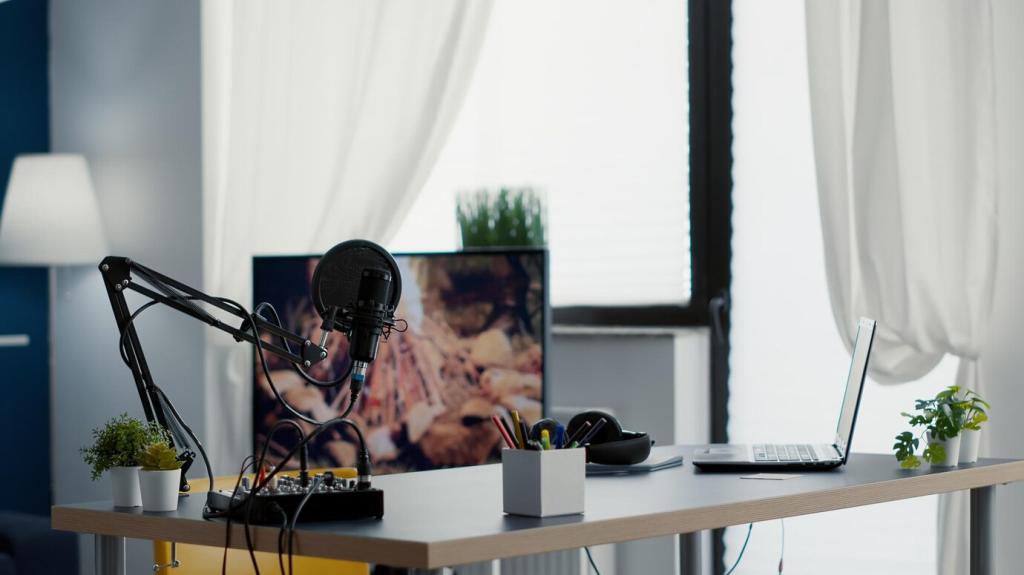
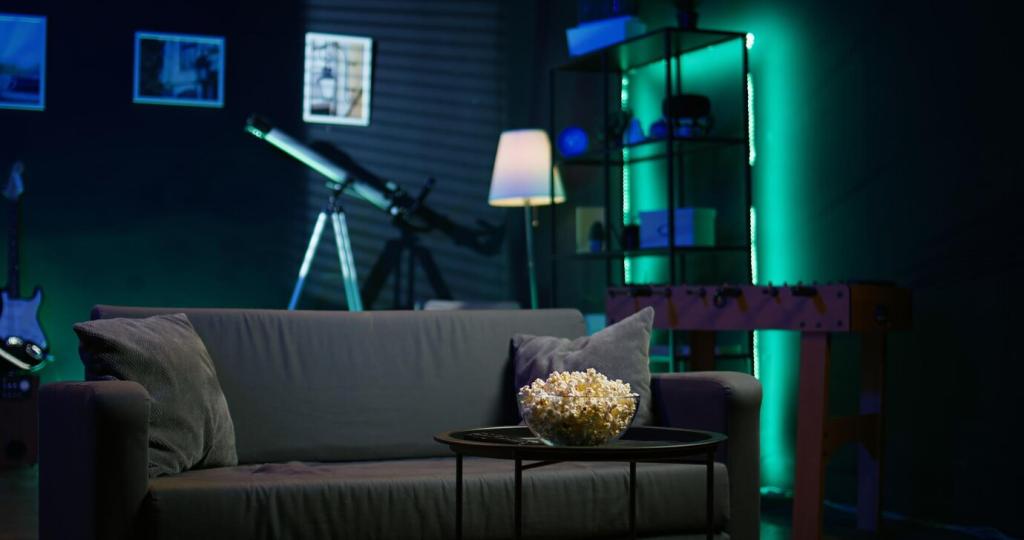
Natural materials invite grounding
Wood, cork, cotton, linen, and wool feel calming because they age gracefully and absorb light rather than reflecting it harshly. A cork block, linen curtain, and wooden bench can create tactile harmony. Tell us which material feels most grounding in your hands today.
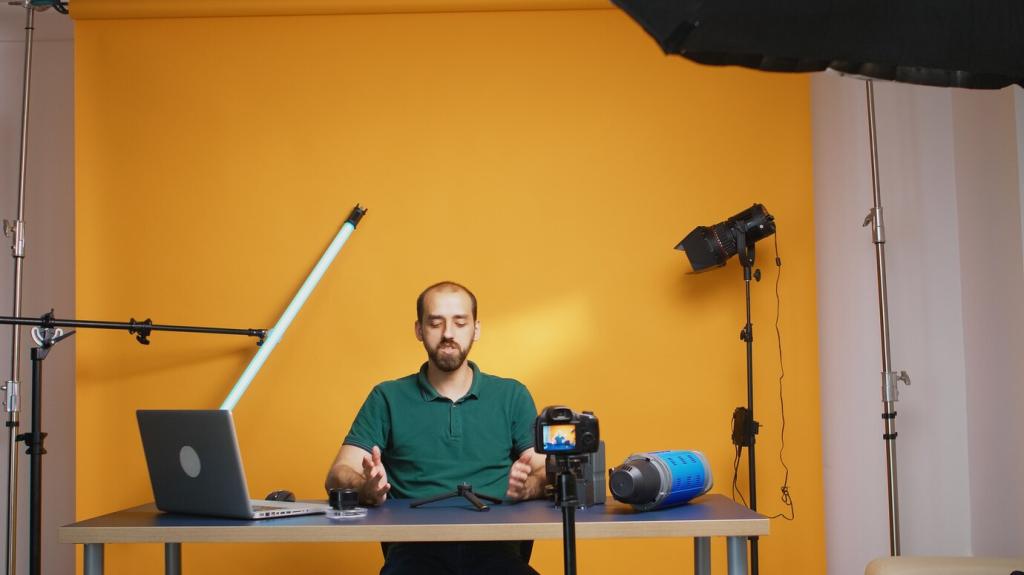
Let daylight lead
Use sheer curtains to diffuse glare, then position the mat where morning light brushes in at an angle. Evening practice thrives with dimmed lamps and warmer tones that support circadian cues. Notice how softer light makes slower movements feel more intuitive and nourishing.
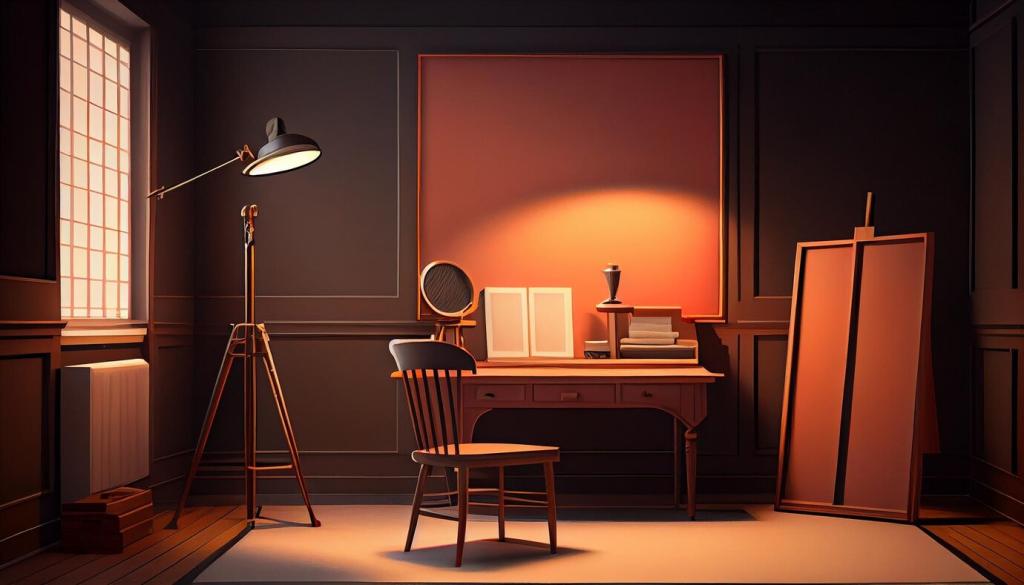
Layer soft artificial lighting
Combine a warm table lamp, a dimmable floor lamp, and a small accent light near your altar or plant. Aim for warm bulbs around 2700–3000K. Candles are welcome—one or two is plenty. Share your lighting setup, and we’ll feature our favorite calming solutions.

Air, plants, and gentle aroma
Invite cross-ventilation before practice, then settle the room to a still hush. Choose low-fragrance or natural notes—think a single eucalyptus sprig or a drop of lavender, never a cloud. Your breath should remain the main fragrance of the room.
Storage, Rituals, and Clutter Control
Use a lidded basket for props, a slim wall rail for straps, and a drawer divider for incense, matches, and journals. Label the inside, not the outside, to keep visuals clean. One-in, one-out keeps everything light. Tell us your smartest hidden storage trick.

Sound, Silence, and Mindful Tech
Soften hard surfaces with a rug and curtain, seal door gaps with a simple draft strip, and place fabric panels or books along one wall to reduce echo. Quiet supports attention—notice how breath sounds louder when the room hushes around you.
Sound, Silence, and Mindful Tech
If you use music, choose slow-tempo tracks or gentle nature recordings and keep volume just above silence. A subtle fan can double as white noise. Share your favorite calm playlist and subscribe for our monthly minimal mixes curated for breath-led practice.
Sound, Silence, and Mindful Tech
Hide speakers in a drawer or behind a cloth, enable do-not-disturb, and pre-download classes so screens stay dark. Minimal interfaces reduce fidgeting and keep presence intact. Comment with your best low-tech tip; we’ll compile a reader guide next week.
